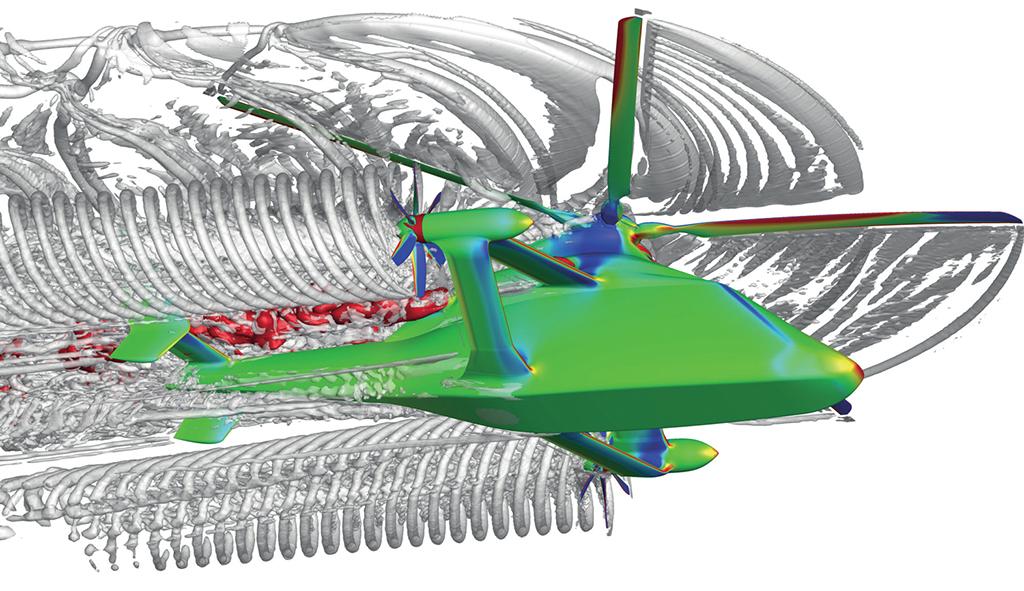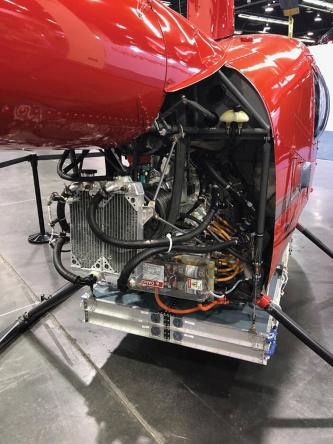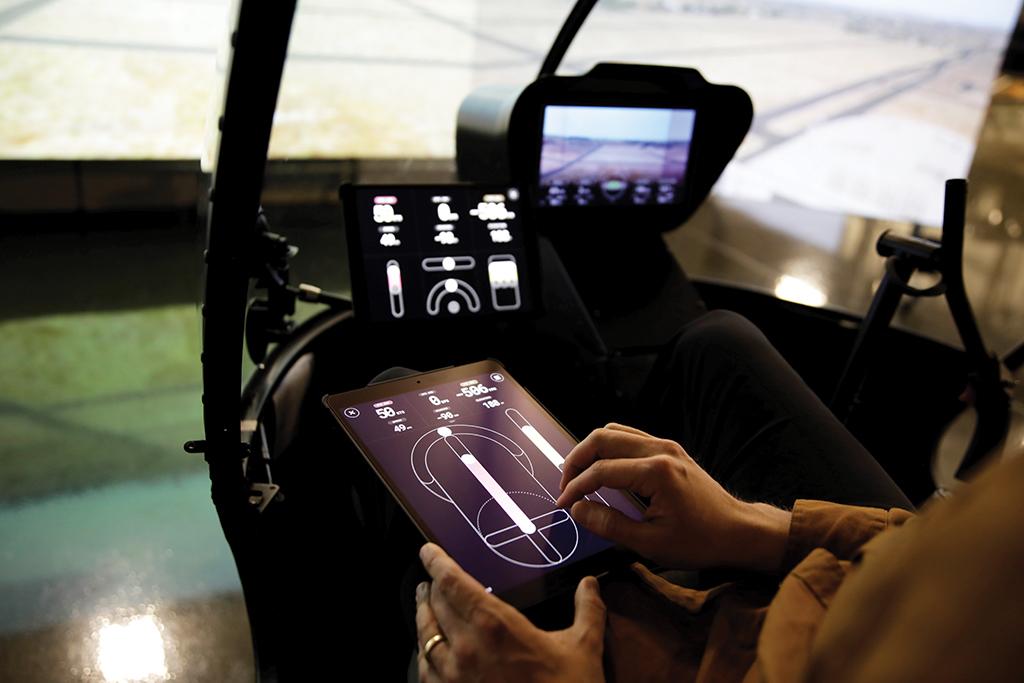Technology Infusion Expanding Market Opportunities For Vertical Flight

Long regarded as a niche, the vertical flight market is witnessing an influx of technology and investment the likes of which the industry has not seen for decades. The ability to take off and land vertically is increasingly viewed as essential to mobility—in the city center or on the battlefield.
While much of the activity stems from the soaring interest around the nascent urban air mobility (UAM) arena, the same enabling technologies are reinvigorating more traditional rotorcraft applications and potentially opening new markets. Whether it is speed, electrification or autonomy, the impact is resonating throughout the industry.
- VTOL is considered key to mobility
- Technologies are enabling wider application
What has changed for the industry is the recognition that vertical-takeoff-and-landing (VTOL) capability—the ability to operate independently of runways—is an enabler of mobility. Hovering is a different capability, one that is required to perform certain missions such as lift external loads, maneuver at low level or conduct precise observation. The ability to hover can make VTOL operations safer but is not essential to emerging applications such as UAM. This distinction is expanding the addressable market.
And that expansion can be measured in several ways, whether it is the number of electric VTOL (eVTOL) startups—now in the hundreds—or corporate membership in the industry’s main technical organization, the Vertical Flight Society, which grew 15% in 2020 and has doubled in the last five years. This has made vertical flight one of most rapidly evolving markets in recent years.
One indicator of the pace and scope of the change underway is speed. After decades of building helicopters that cruise at around 140-150 kt., U.S. and European manufacturers are developing next-generation rotorcraft capable of cruising at speeds well above 200 kt.
Speed has always been possible: The Westland Lynx in 1986 set a helicopter speed record of 216 kt., which still stands today, and the Bell Boeing V-22 can cruise at 275 kt. But the tiltrotor remains a unique military asset—at least until Leonardo certifies the AW609 civil tiltrotor.
What was missing was a compelling need for speed. Now the U.S. Army wants to go farther faster, to be more survivable in contested environments. The result is the Future Long-Range Assault Aircraft (FLRAA) program, which will replace the Sikorsky UH-60 Black Hawk beginning in 2030.
FLRAA emphasizes speed, range and endurance at range. As a precursor, two high-speed rotorcraft demonstrators were built. The Bell V-280 Valor tiltrotor has exceeded 280 kt. in flight tests, and a Sikorsky-Boeing team hopes to exceed 250 kt. with the SB-1 coaxial rigid-rotor compound helicopter.
But speed comes at a price. To go twice as far twice as fast as the Black Hawk will require twice the power and will likely cost twice as much. And the Army has many slower, shorter missions performed today by the UH-60. So while Sikorsky-Boeing’s challenge with the SB-1 was to show a helicopter can go fast, Bell’s goal with the V-280 was to prove a tiltrotor has the low-speed chops to perform helicopter missions.
Absolute speed may not be the critical factor. Unveiling its Defiant X design for FLRAA in January, the Sikorsky-Boeing team said it is optimized for “speed where it matters,” which is in and around the objective area so that troops can be landed and offloaded quickly and survivably. In that environment, the ability to decelerate rapidly and maneuver agilely is as important as speed, the team argues.
The wider Future Vertical Lift (FVL) initiative to modernize Pentagon rotorcraft fleets has lost some of its signature focus on speed as individual services specify their requirements. The Army itself eased off the pedal for the Future Attack Reconnaissance Aircraft (FARA), setting the speed threshold for its armed scout at a more modest 180 kt. compared with 250 kt. for FLRAA.
Meanwhile, the Navy’s FVL-Maritime Strike requirement to replace the Lockheed Martin MH-60 and Northrop Grumman MQ-8 emphasizes endurance. But the Marine Corps remains focused on speed and range: Its Attack Utility Replacement Aircraft requirement calls for a 310-kt. dash speed and a 450-nm mission radius—beyond the Army’s needs for FLRAA and likely only within reach of a tiltrotor.
The unavoidable issue that comes with speed is affordability, and that is equally true in the commercial arena. Europe has embarked on two fast rotorcraft demonstrator programs aimed at bridging the gap between helicopters and fixed-wing regional aircraft. But requirements such as reducing ownership cost and environmental impact are as important as increasing speed and range.
Under the Clean Sky 2 research program, Airbus Helicopters is leading the Racer demonstrator, which is designed to retain the versatility of a helicopter while increasing speed to 220 kt. and reducing cost per distance flown by 25%. The result is a compound helicopter with a box wing and tip-mounted propulsors. The Racer will enter final assembly this year and is planned to fly in 2022.

Leonardo Helicopters is leading the Next-Generation Civil Tiltrotor (NGCTR) demonstrator, which is designed to cruise at 280 kt. compared with 165 kt. for the similarly sized AW139 helicopter. But key to the program—as with Bell’s V-280—is demonstrating that the costs of building and operating a tiltrotor can be lowered to within reach of an equivalent conventional helicopter.
Based on the AW609, the NGCTR is demonstrating a simple, straight wing and fixed engines with tilting gearboxes and proprotors, which are also crucial design features of Bell’s V-280 that tackle cost drivers on the first generation of tiltrotors. The demonstrator is planned to fly in mid-2023, but Leonardo is not expecting to have a 25-seat civil tilt-rotor ready for service before 2035.
Electrification is a new area of focus for aviation, and the rotorcraft sector is no exception. But the challenges are unique because of the combination of energy density and power density required for vertical flight. Whereas UAM startups are leading the charge toward eVTOL, established manufacturers are exploring the value that electrification could bring to rotorcraft.
A characteristic of rotorcraft is that the power required for VTOL and hover is significantly greater than that needed in cruise. Operating turbine engines at part power is inefficient, so fuel burn is high. One option is to shut down one of two or more engines in cruise. This approach will be demonstrated by the Racer, which is capable of shutting down and restarting one of its two Safran RTM322 engines in flight.
Another option is to use a smaller engine and augment its output during VTOL with a battery-powered electric motor. This eliminates the risk of restarting an engine in flight but adds the dead weight of batteries in cruise. Hybridization could have other potentially valuable uses, however.
One is an electric backup system that helps maintain rotor speed during autorotation following engine failure. Airbus plans to test the system this year using its single-turbine H130-based Flightlab. Powered by a 1-kWh battery, the 100-kW electric motor will provide 30 sec. of power. A later phase will connect two motors in parallel and enable 2 min. of low-power electric flight to help find a safe landing zone.
First tested in 2011 but deemed too heavy, the backup system is being revisited because of increases in motor power density and battery energy density. Airbus believes the system could also be used to augment engine power and increase the payload of a light helicopter as well as reduce noise by allowing the rotor to be slowed while still enabling rapid spool-up in an emergency.
Improving safety by replacing the tail rotor is another potential application of electrification. Bell flight-tested its Electrically Distributed Anti-Torque (EDAT) system in 2019 on a Model 429. Using off-the-shelf components, the demonstrator replaced the 429’s single tail rotor with an enlarged vertical tail housing four rpm-controlled ducted fans that could be operated individually.

The EDAT could function with three of the four fans inoperative, providing redundancy that a conventional tail rotor lacks. The motors also could be operated bidirectionally, allowing finer control. Wiring replaced the tail-rotor driveshaft and gearboxes, potentially reducing maintenance. Bell also noted a 6-7-dB noise reduction. The company is optimizing the EDAT design but has yet to announce an application.
Power and energy densities remain a challenge to the electrification of rotorcraft. Developers of eVTOL vehicles are making progress, in part because of improvements in motors and batteries but also because air taxi designs are evolving toward vehicles that are essentially fixed-wing aircraft with brief VTOL capability. These designs exploit the aerodynamic efficiency of wingborne flight and avoid the energy drain of rotorborne hover.
All-electric helicopters are still a stretch, although Tier 1 Engineering has received funding from United Therapeutics (UT) to obtain FAA supplemental type certification for a battery-electric power train retrofit for the Robinson R44 light helicopter. UT is interested in using the electric R44 for organ transport, and Eco Helicopters has an agreement to use retrofitted R44s for UAM services.

While early movers such as EHang and Volocopter see a niche for short-range multicopter eVTOLs inside cities, an increasing number of air taxi developers are targeting 15-50-mi. or longer trips that can save customers significant time over ground transportation. The result is vehicles that look quite different in both their airframe and system architectures. But how deeply such designs will penetrate traditional rotorcraft markets remains to be seen.
Autonomy is another trend gripping aviation and again one that poses particular challenges for the VTOL industry. Rotorcraft operate at lower altitudes, into and out of confined spaces, in what is euphemistically called an “obstacle-rich environment.” Autonomously identifying safe landing zones and avoiding terrain, trees, wires and other hazards are key issues that must be addressed.
Underpinning greater automation is the adoption of fly-by-wire (FBW) flight control, first in the military and now in the commercial arena beginning with the Bell 525. The trend is expected to continue: Startup Skyryse is targeting the R44 as an initial application of its FlightOS system. FlightOS is designed to provide simplified flight control and a higher level of automation by building on an FBW backbone that can be retrofitted into general aviation aircraft, including helicopters.

Sikorsky has been pursuing autonomy since it launched its Matrix Technologies R&D program in 2013. The company has developed more fly-by-wire helicopters than any other manufacturer, and the Matrix program is developing a certifiable autonomy management system that can plug into any FBW-enabled aircraft, not just rotorcraft. Using Matrix, Sikorsky has modified an S-76 as a testbed and converted an S-70A Black Hawk to an optionally piloted vehicle (OPV).
Capabilities demonstrated include autonomous mission execution and dynamic replanning, landing zone selection and obstacle avoidance using a multisensor perception system. Next steps will include demonstrating complex-mission collaboration between the S-70A OPV and a U.S. Army UH-60M also retrofitted to FBW and equipped with the Matrix autonomy system. The Army has said that autonomous capability will be designed into both FLAA and FARA.
With autonomy as the long-term goal, the UAM industry is also pushing hard to enable simplified vehicle operation, both to ease the pilot-training challenge during scale-up and to pave the way for lower-cost remotely piloted and eventually fully autonomous operations. But the same technology is certain to come to traditional rotorcraft markets.
Kaman is developing a commercial unmanned aircraft system based on its K-Max external-lift helicopter and aimed at missions such as firefighting, for which optionally piloted capability could be valuable. Erickson plans to demonstrate an autonomous capability to perform hazardous firefighting missions with the heavy-lift S-64 Skycrane using Sikorsky’s Matrix system. Airbus will use its Flightlab to test sensors and software to improve safety and make flying more intuitive.
At the industry’s historical pace, it could have taken decades to introduce the technologies now being accelerated into the rotorcraft market by developments in the UAM sector. Vertical flight remains one of the most challenging domains in aviation, but with a renewed respect for its capabilities, a more intense and diverse effort than has been seen in decades is underway to advance VTOL.





Comments
One assumes that an actual air assault conducted by the Future Long-Range Assault Aircraft (FRLAA) will require an escort of attack helicopters. If the top speed for the FARA is 180 knots this will mean that the assault "package" will be limited to that speed (or less) for ingress. During WW II, this would have been the equivalent of building fighters whose top speed was less than the bombers that they were supposed to escort.
If the significant difference in top speed between troop carrying and attack helicopters is allowed to persist, the Army will literally be paying a great deal of money for a speed capability in the FRLAA that can never be used in combat.